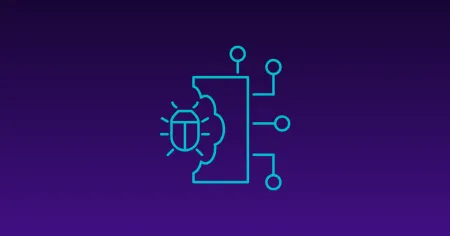Blog
Dec 8, 2023
Social Engineering: The Art of Human Hacking
Learn how social engineering exploits human vulnerabilities through manipulation and deception. This guide covers different tactics cybercriminals use and key strategies to protect your organization.
7 min read

In the interconnected digital landscape, the weakest link in cybersecurity is often not flawed software or gaps in firewalls, but susceptible human nature itself. Social engineering exploits this vulnerability by manipulating human psychology and emotions to gain unauthorized access to systems and data. This comprehensive guide aims to empower organizations to safeguard against this prevalent attack vector that no tech solution can fully eliminate.
Understanding social engineering
Definition and characteristics
Social engineering refers to intentionally manipulating people to divulge confidential information or perform actions against their best interests. Rather than directly breaking cyber defenses, social engineering tactics exploit human vulnerabilities – emotions, psychology, and behavior.
Key features
- Deception and manipulation: Social engineers use deception, persuasion, and manipulation to exploit people’s tendency to trust.
- Variety of mediums: Tactics may involve technology like phishing emails or phone calls, but can also be purely offline interpersonal manipulation.
- Relies on open access: Social engineering relies on people’s willingness to share sensitive information or grant access to protected systems.
- Targets the weakest link: Attackers identify the most vulnerable individuals in an organization to exploit rather than trying to breach the strongest points of cyber defense.
The advent of social engineering
The roots of manipulation
Long before the digital age, the techniques of social engineering have been used throughout human history to exploit vulnerabilities in judgment, trust, and perception. Pre-digital cons, frauds, and deceptions relied on similar psychological weaknesses – greed, fear, desperation, and credulity. Scammers identified and amplified these traits in targets to manipulate for financial gain.
Rise of technology-enabled tactics
The integration of communications technology like the telephone and global connectivity brought these isolated manipulation techniques to an industrial scale. Robocalls, for example, enabled automated voicemail cons to blanket millions of recipients efficiently. As technology provided mass reach, human hacking exploded in ubiquity and profitability.
Phishing and scalable deception
The rise of the commercial internet and corporate email particularly revolutionized the potential and practices of social engineers. Before, physical mail scams had limited traction due to postage costs and manual labor. Phishing emails changed the equation by enabling deceitful content to be crafted once and sent to millions for free.
Maturing tactics
In the past decade, social engineering techniques have become more refined as the understanding of social media usage, mobile messaging apps, and electronic transactions has improved. For instance, business email compromise scams now integrate deep organizational research through social media to impersonate executives over email convincingly.
An ever-growing menace
As digital transformation continues accelerating across industries globally, human dependence on technology for communication and transactions has widened the attack landscape for social engineers exponentially. More employees access critical systems routinely, customers readily share data through apps, and individuals rely on digital payments for convenience. With abundantly increasing targets, innovating attack techniques, and minimal barriers to entry, social engineering threats will foreseeably continue rising.
Global impact of social engineering on cybersecurity
Escalating data breaches
High-profile data breaches enabled by social engineering underline that even robust cybersecurity defenses can be rendered ineffective when the human element is vulnerable. Major breaches at organizations like LinkedIn, MySpace, and LastPass all involved social engineering, highlighting its risks.
A paradigm shift in strategies
Recognizing the inherent vulnerability of people, security leaders have been re-evaluating defenses to address the human factor. New initiatives like regular cybersecurity awareness training, simulated phishing email tests for employees, and the principle of least privilege access promote resilience against social engineering.
Undermining trust in digital economy
For the digital economy and electronic transactions to thrive, participants must trust companies to protect their data and transactions. Yet large-scale personal data breaches enabled by social engineering occur frequently, eroding consumer and business confidence. Social engineering threatens the sustainable adoption and integration of technologies across industries by undercutting this digital trust.
Financial fraud on the rise
Alongside data theft, social engineering scams tricking victims into fraudulent money transfers have exploded globally. Business email compromise scams alone resulted in $43 billion in losses between 2019-2022, evidencing the scale of financial fraud centered on manipulating human psychology and emotions.
Worsening cybercrime busts
Global law enforcement is struggling with the recent surge in technology-enabled financial fraud and cybercrime, with recovery rates for funds significantly decreasing. Social engineering tactics make fraud investigation harder, allowing perpetrators to better evade authorities.
Attack vectors and techniques
Email phishing
The most ubiquitous tactic, phishing, uses emails pretending to be from trusted sources to manipulate recipients. Common techniques include links to fake login pages to harvest credentials or attachments with malware. With natural language AI advancing spear-phishing authenticity, human discernment faces rising challenges.
Vishing – phone-based manipulation
Combining telephones with phishing, “vishing” calls impersonate banks, tech support etc. to obtain sensitive user information through manipulation only with verbal cues. With no visual identifiers possible over calls, vishing presents a unique social engineering challenge.
Baiting – exploit human temptation
Baiting tricks people into inserting malware-laden storage devices like USB flash drives into corporate systems by appealing to universal human curiosity or temptation impulses. The malware then compromises networks and data that defensive cybersecurity tools may not catch from an approved inserted device.
Pretexting – establishing false context
Pretexting aims to establish a false story, identity or situation as a pretext to natural conversation where the attacker can extract privileged information conversationally from a trusting employee. These false personas like external consultants, investigators or auditors appear credible excuses for sensitive data queries.
Quid pro quo – opportunistic exchange
Quid pro quo is a common tactic is to offer a service, product or benefit of interest to the victim in exchange for something the attacker wants to gain nefariously. For example, scam conversion therapy organizations would offer to “cure” someone’s loved one in exchange for health records or insurance data.
Tailgating – exploiting physical spaces
The attacker physically follows an authorized person through secured entry points like doors without proper physical credentials. Tailgating does not utilize digital deception but rather exploits natural human hesitation to re-verify individuals already granted entry.
Securing against social engineering
Keep software updated
Having updated software minimizes security vulnerabilities in organizational systems, making follow-on exploitation harder even if an initial social engineering attack succeeds in gaining a foothold. Modern operating systems integrate features to block common social engineering vectors, increasing protection.
Implement the least privilege principle
Restricting unnecessary employee access to confidential organizational data or critical IT systems limits damage potential in case their credentials are compromised via social engineering relative to personnel with excessive privileges. Minimization of access aids resilience.
Conduct training exercises
Running realistic simulated phishing and phone scam experiments makes personnel more cognizant and resilient against emerging real-world social engineering tactics. Exposing employees to deception examples develops instincts.
Develop communication guidelines
Establishing policies dictating communications over channels like phone, email and messaging applications promotes caution when faced with abnormal or urgent requests for data sharing or transactions. Official guidance assists judgment in ambiguous high-risk situations.
Promote a vigilant culture
Beyond formal policies and processes, foster a workplace culture where personnel proactively notice and scrutinize unusual behaviors or communications potentially indicative of social engineering manipulation. Cultural attitudes profoundly influence attack resilience.
Enable multi-factor authentication
Adding factors like biometrics or hardware tokens protects against singular credential compromise via social engineering, preventing system access by stolen login information alone even if obtained by hackers. Multi-factor authentication frustrates attacks.
Limit personal information access
Restricting employee access to customer, partner or organizational personal details like addresses reduces the ability of compromised personnel to enable potential identity fraud through social engineered data theft. Limiting background data access impedes abuse.
Audit and penalize violations
Periodically auditing personnel compliance on policies related to communication security, data access and system permissions promotes adherence. Coupled with accountability measures like warnings or firings, audits reinforce secure behavioral norms.
Key figures in social engineering
Frank Abagnale
Frank Abagnale’s early experience as a conman inspired his current career consulting institutions on fraud prevention. Many of his former tactics are now used for social engineering.
Christopher Hadnagy
Hadnagy authored several books on the topic, founded the Social-Engineer professional certification and consults governments/companies on human hacking defense.
Kevin Mitnick
Formerly known as a hacker using social engineering methods to access corporate networks, Kevin Mitnick now ran a security firm and spoke extensively on defending against the same kinds of manipulation until his death in July of 2023.
The future landscape
AI-enabled attacks
Advances in AI like generative writing to craft better spear-phishing content or voice synthesis for vishing automation indicate rising social engineering sophistication.
Shorter cyberattack lifecycles
Lower barriers to entry accelerate innovations in attack techniques, shrinking timeframes organizations have to prepare between new attack vector emergence and exploitation.
Persistent gaps in human vulnerability
While technology and awareness can impede specific tactics, fundamental human emotional/psychological vulnerabilities are persistent, requiring equally persistent efforts to promote cyber hygiene.
Key takeaways
In closing, with social engineering having taken manipulation to industrial scales, organizations require comprehensive awareness and training alongside cybersecurity tools. Just as advanced persistent threats (APTs) highlighted shortcomings in technological defenses, the prevalence of social engineering underscores the need for human-centric protections to secure the people within an organization. Because regardless of how advanced cyber defenses may become, human nature provides an ever-present vulnerability to be exploited.
Stay in the know: Become an OffSec Insider
Get the latest updates about resources, events & promotions from OffSec!
Latest from OffSec

Research & Tutorials
CVE-2024-13059: Exploiting Path Traversal in AnythingLLM for Remote Code Execution
Discover CVE-2024-13059, a critical vulnerability flat that affects AnythingLLM’s handling of ASCII filenames in the multer library.
Apr 17, 2025
2 min read

Enterprise Security
How OSCP Holders Can Lead Their Teams to Greater Cybersecurity Resilience
Champion OSCP training in your organization to build a unified, resilient security team.
Apr 11, 2025
6 min read

Research & Tutorials
CVE-2024-57727: Path Traversal Vulnerability in SimpleHelp Web Application
CVE-2024-57727 lets attackers read sensitive files via path traversal in SimpleHelp. Learn more about how attackers exploit this flaw.
Apr 10, 2025
3 min read